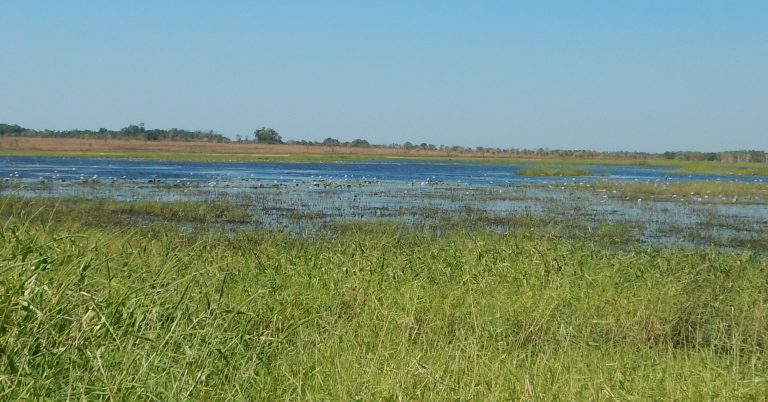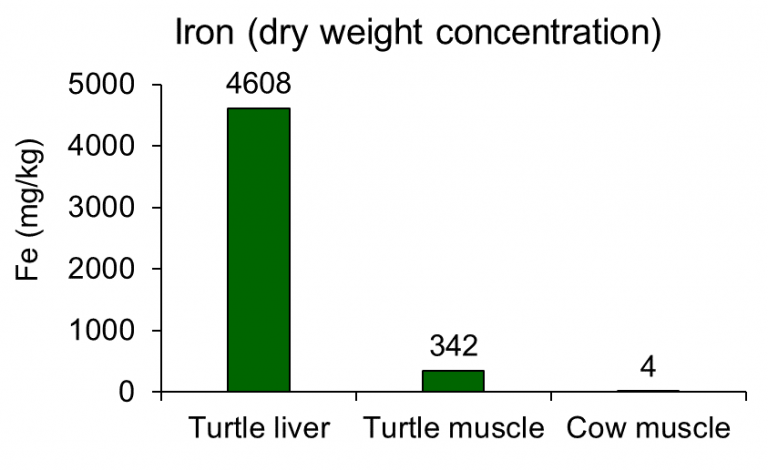Wildlife contamination by heavy metals from mines and other enterprises is of great concern worldwide (Figure 1). The concern is not only towards the animals suffering from the contamination itself but also the communities that rely on these animals as part of their diet. Bushmeat is an important source of protein and micronutrients (Iron and Zinc) for remote indigenous communities. Anaemia is a serious issue in many of these communities. Bushmeat contributes to the community overall health and provide opportunities for income in the local markets. Therefore, heavy metal contamination in bushmeat could have severe consequences the diet and income of those living in this communities.

It is unlikely that remote communities with high rates of anaemia will be willing to stop eating bushmeat. The rates of Iron absorption by the human body is higher when we consume animal meat. The chemical form of iron is an important factor affecting the iron availability. The heme Iron form, present in meat, is more efficiently absorbed than the non-heme iron present in vegetables and iron supplements. However, high levels of heavy metals, exceeding the international food safety standards can cause neurotoxicity, kidney disease, liver cancer, and developmental effects in unborn babies and children. If bushmeat have high levels of heavy metals, pregnant woman, nursing mothers and children should be the first ones to be discouraged from consume it. Unfortunately, these are same age groups who are more propense to anaemia and need these high Iron sources the most.
Long-necked turtles in Northern Australia
The northern-long necked turtle is considered a key traditional food for the remote indigenous communities in Northern Australia. It occurs in lowland waterways, billabongs, and seasonal wetlands on coastal floodplains across Northern Australia (Figure 2) and New Guinea. This species is traditionally harvested, particularly in the dry season, when it can be found estivating in the drying floodplains.

The importance of the northern long-necked turtle to the diet of local communities is corroborated by the high levels of Iron found on its muscle (average of 342 mg/kg, dry weight concentration) and liver (4,608 mg/kg). In comparison, cow meat has approximately 4 mg/kg and the two species of fishes (Bony Bream and Back catfish), commonly found and consumed in the same area where these turtles were captured, have Iron levels lower than the reporting limit (Figure 3).

Figure 3. Comparison between the concentrations of Iron in northern long-necked turtle muscle and liver with cow muscle.
The northern long-necked turtle (Figure 4) is adapted to traditional harvest. It is a fast-growing, highly fecund and early maturing species. There is also a potential to use the northern long-necked turtle to improve health locally and provide opportunities for novel Traditional-Owner led enterprises such as turtle farming and the sale of sustainable harvested turtle meat. Anaemia is a serious issue in the Northern Territory, where 15% of pregnant women and up to 25% of the children (0 to 5 years) are anaemic. However, this turtle is carnivorous and occupy a high trophic level in the food web. Animals higher in the food web, such as predators, also tend to have higher concentrations of heavy metals in their body. Therefore, this species is likely to have one of the highest concentrations of heavy metals on the floodplains, where they live.

Figure 4. The northern long-necked turtle
Although Northern Australia has a long mining history near water bodies, there is no monitoring of mercury and other heavy metals on freshwater turtles consumed by traditional owners. If anaemia is to be halted in such places, there is an urgent need to better understand of the role of bushmeat, such as freshwater turtles, as a source of protein and micronutrients, and how pollutants could endanger their populations and those harvesting them.
By Dr Carla Eisemberg – Charles Darwin University


Twitter